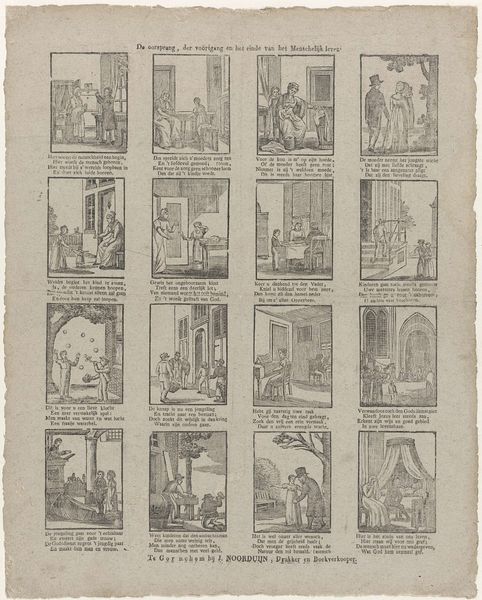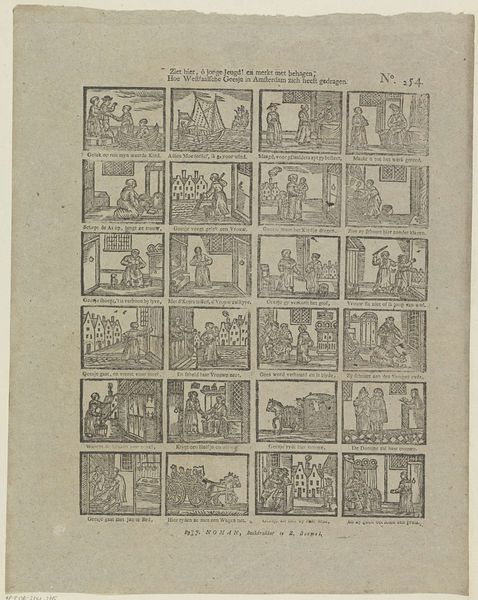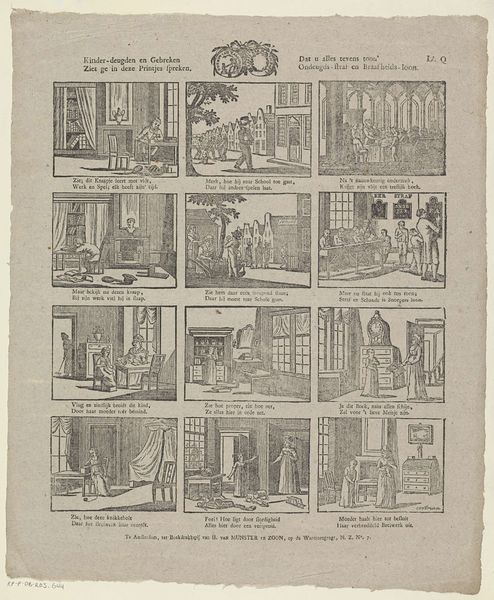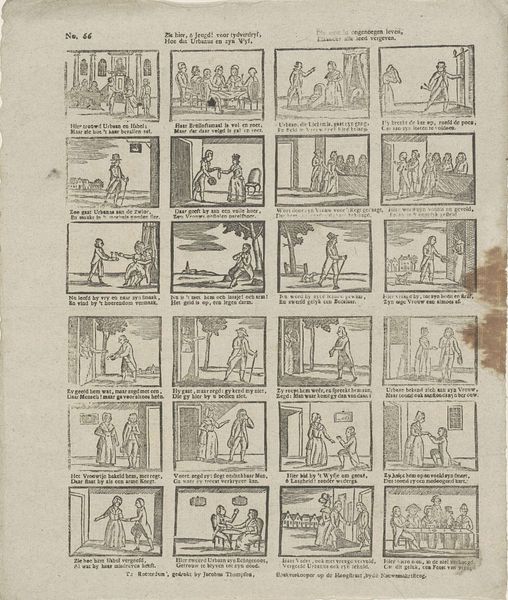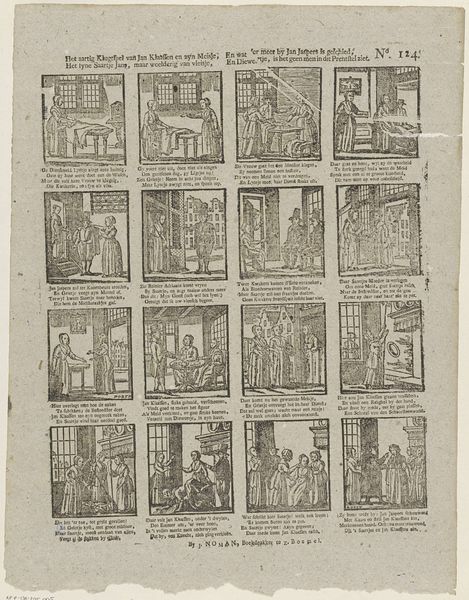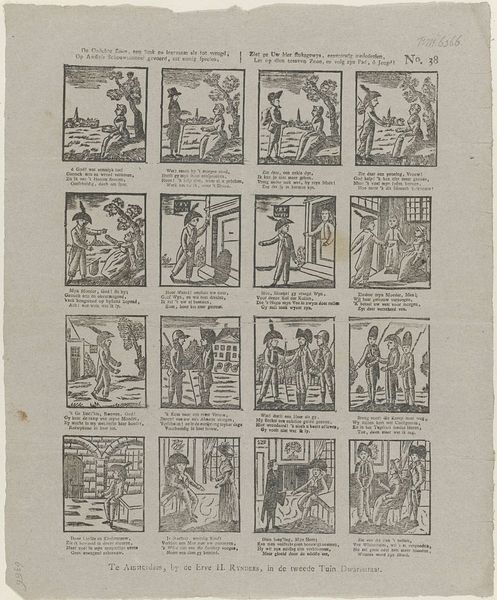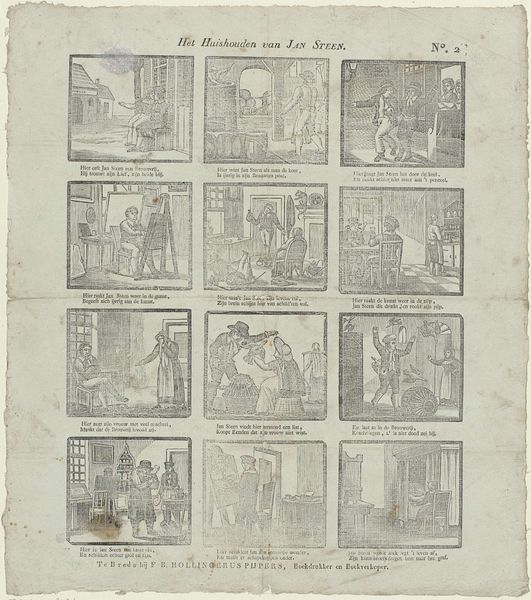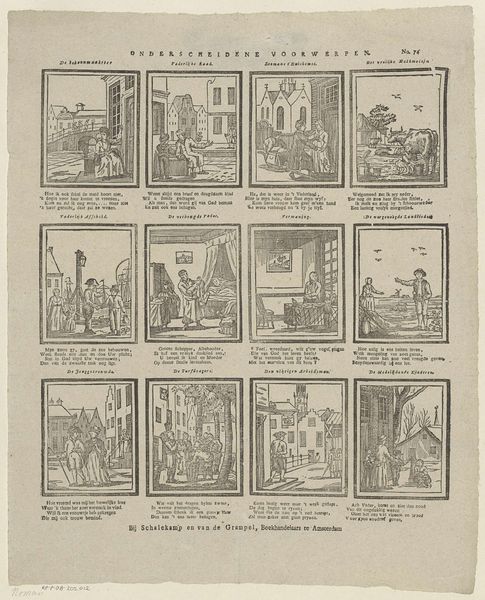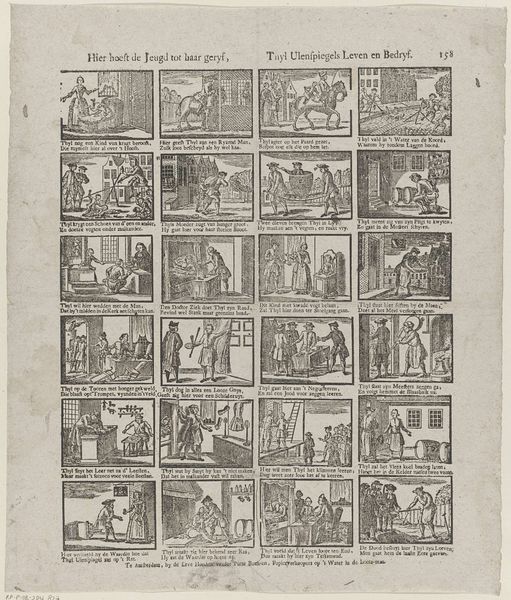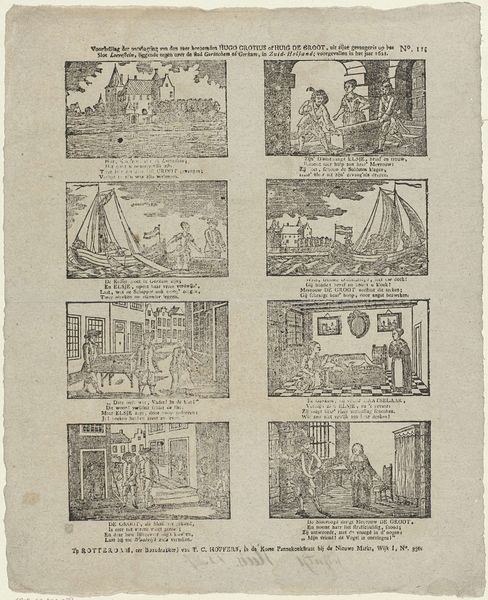
Den oorsprong, voortgang en het einde van het menschelijk leven 1819 - 1840
0:00
0:00
print, engraving
#
comic strip sketch
#
quirky sketch
#
narrative-art
# print
#
old engraving style
#
sketch book
#
personal sketchbook
#
sketchwork
#
folk-art
#
pen-ink sketch
#
sketchbook drawing
#
genre-painting
#
storyboard and sketchbook work
#
sketchbook art
#
engraving
Dimensions: height 410 mm, width 334 mm
Copyright: Rijks Museum: Open Domain
This print, "The Origin, Progress, and End of Human Life," was made by Alexander Cranendoncq in the 19th century. The artist presents the cycle of life through a series of small, framed scenes arranged in a grid, from infancy to death. Notice how the linear structure provides a sequential narrative, but also implies a cyclical understanding of human existence. Each scene, though small, contains carefully rendered details that invite close inspection. Consider how Cranendoncq uses light and shadow to create depth within these miniature worlds. The graphic quality of the printmaking medium reduces the world to stark, tonal contrasts. This heightens the moral undertones of the print. The human experience is conveyed as a series of stages, each carefully observed and framed within the broader structure of existence. The print invites reflection on the human condition. The use of clearly defined lines emphasizes the boundaries of each stage, reinforcing a sense of order. But the overall composition implies a fluidity to the life cycle, and the individual scenes are interconnected within the frame.
Comments
No comments
Be the first to comment and join the conversation on the ultimate creative platform.
